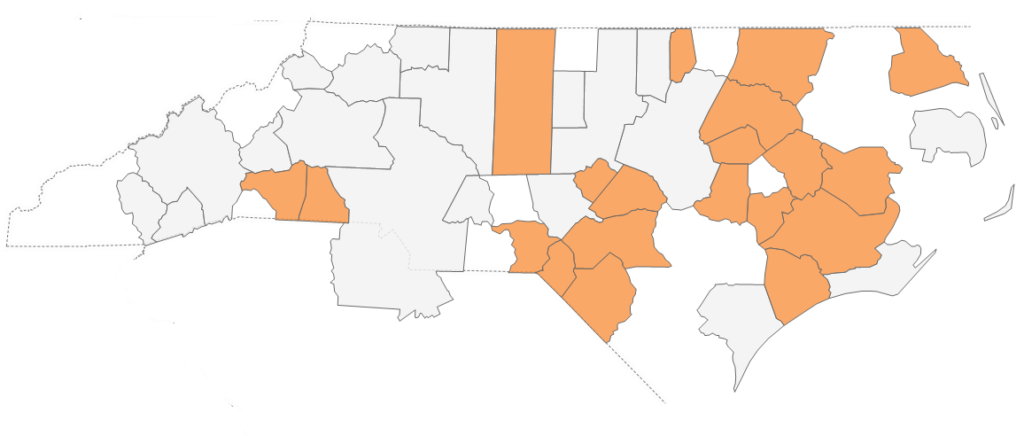For several months labor market data have revealed that metropolitan statistical areas (MSAs) east of Interstate 95 are experiencing a much more challenging recovery than peer communities throughout the state. Consequentially, data seem to indicate that Eastern North Carolina micropolitan economies are suffering in concert with neighboring metropolitan statistical areas, a likely result of an anemic recovery. The map below illustrates the groups of statistical areas1 clustered around MSAs such as Fayetteville, Rocky Mount, Greenville, New Bern, Jacksonville, and Goldsboro.


Regions highlighted in orange experienced unemployment rates higher than the state’s average in September. For most statistical areas, this trend has persisted since the onset of the Great Recession. Laurinburg and Lumberton, two statistical areas part of the Fayetteville combined statistical area (CSA) have September unemployment rates 1.8 to 2.9 percentage points higher than the state average. Bladen County, southeast of Cumberland County, has an unemployment rate of 5.3 percent and has seen its labor force decrease 7.6 percent since 2007, before the Great Recession. Roanoke Rapids and Wilson, micropolitan statistical areas attached to the Rocky Mount CSA have unemployment rates of 6.4 and 6.3 percent respectively. Halifax County, which borders both Nash and Edgecombe counties in the north has an unemployment rate of 6.7 percent and has lost 15.1 percent of its labor force since 2007.
While the state unemployment rate has trended downward from since the beginning of the year, it is apparent that a few cities such as Charlotte, Raleigh, and Durham alone are driving much of that trend. In September, just nine counties, Mecklenburg, Wake, Durham, Guilford, Forsyth, Buncombe, New Hanover, Union, and Cumberland accounted for 2,299,829 or 46.3% of the state’s 4,967,185-person labor force.
[1] Statistical areas comprise of micropolitan statistical areas, metropolitan statistical areas and combined statistical areas as delineated by the United States Office of Management and Budget
 Justice Circle
Justice Circle